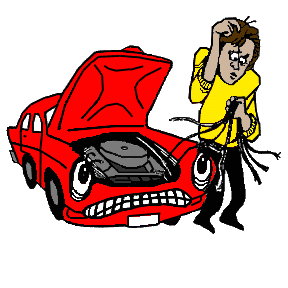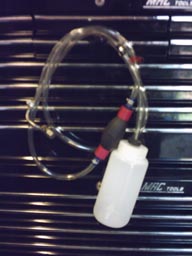

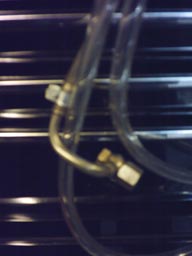
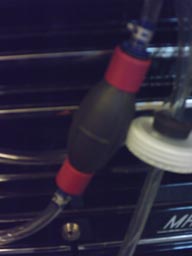
EDC pump testing procedures
EDC electronic diesel pump testing/repair costs
Gravity feeding any diesel pump. To prove the delivery of fuel to any diesel pump, excluding the tank & pipe work, filter, filter housing & non-return valves fitted to some systems. Over the years I've used anything from a funnel, to several specialised expensive service tools. But this is my current tool of choice, which I have fabricated myself. It consists of: one litre camping water bottle with 20mm hole bored thru lid, 20mm electrical grommet to hold pipe in bottle, 1200mm of translucent pipe, one diesel prime-ing bulb with an internal one-way valve (sourced from a Citroen), one banjo fitting bent at 90 degrees (sourced from dead pump), one 20micron inline air filter (all thou an early Merc inline fuel filter would do, they only cost £1.92), plus a few hose clips. The fittings in the photo, on the banjo are only there, to plug it after use to save spillages, ingress of dirt. In use, you would use the fittings & copper washers from the pump being tested. This will make a good connection for a test run. You will not get a long test run from 1000ml of derv, due to volume of fluid leak off to the main fuel tank. You can also plug the pump leak-off venturi/port on the pump, that way you can get a long enough test run for a ride round the block, but this may complicate matters if you don't understand which pipes are which, they do vary allot form car to car. The clear pipe & bulb allow you to bleed pump up, without having to invert the bottle, the filter & banjo plugs will stop contaminants reaching the pump. Angled banjo fitting allows connection to top entry and side entry pumps. The translucent bottle is soft in construction, so collapses under vacuum, no need for breather hole & thus associated spillages. Only use translucent PVC pipe so you can see where the air is.
To overlook basic fuel supply to any diesel pump, is a common oversight. Simple fact is, any pump will not work without a supply of diesel fluid. Most people overlook the obvious and concentrate on the electronics first. I've got many a non-starter running thru this method (hundreds). Many have been referred to us from main franchised dealers. After being plugged in for electronic diagnostics, logged faultcodes for low fuel pressure and thus they have condemned the injection pump. But the fact is, if very little diesel fluid is getting to pump, low or zero fuel pressure, will be developed. High pressure injection pumps create very high pressure with very low volume. Any minor loss of volume will result in very low pressure being created.




Leak down testing. It is also possible with two bottles/pipes to prove, pump leak-down over night (bad starting symptoms). By connection to the pump leak-off venturi & suspending the bottles from the bonnet. By marking the pipe with marker pen to see if any volume lost . It is also possible to test over night leak down of conventional injectors, by connecting similar set up to injector leak off ears. Seeing if any volume lost. We have an expensive purpose made injector/pump volume tester for leak off volume, Hg vacuum & delivery pressure up to 3000psi. So I have never made the simple version up. Reason being we do not have cars long enough in the workshop to do overnight tests.
Leak testing using bubble test method. Fitting a small length of clear tubing in the pump return line, as near as possible to injection pump & running the engine. Is a sure way to monitor if any air is being dragged in to the system. This is a simple low tech method of proving a point. Finding where the air is coming in, could prove harder. But most of the time its a matter of methodically working back thru the fuel lines to the tank, resealing them.

A suspect dead VP44 pump can be tested in situ. PSG5 only. Check for battery voltage to pin 7, and a good earth to pin 6. The two canbus connections can also be tested with an oscilloscope. Most problems are associated with bad connections which are prone to trouble when passing high currents. The supply to this type of pump is fused at 30amps. VP44 pumps normally fail due to a lubrication issue of the distributor rotor similar to the Lucas/CAV series. In common with the Lucas pumps, fuel and hence lubrication is cut off to the rotorhead during conditions of overrun & engine braking. Any restriction in fuel supply to the pump, for instance a partial filter blockage could also cause damage to the pump, through lubrication starvation. Early models were quite prone to failing, within the distributor rotor assembly, which has been through three different updates since the pump was first made. Later pumps are therefore more reliable in this respect. Another common fault causing instant failure, is the position sensor. It is connected to the main FPCU (fuel pump control unit PSG5-16, mounted at the top of the pump) by a rather delicate IBM type ribbon cable. The position sensor is a set up of three coils and is not a hall effect device, as commonly believed by many in the trade. Should you attempt to remove the pump control unit to expose the position sensor. Not the easiest of jobs! The average DC resistance of these is around 77-85 ohms, when in good order. Another instant failure is caused by the front delivery spooling solenoid valve internal electrical coil collapses, this solenoid is positioned between the output injector pipes. This solenoid can be tested in situ by severing the connecting wires and measuring for a resistance in the coil or connecting to a 15amp supply from the battery, the engine should start and rev very high, should the engine start using this method, it will not run very well due to no control being taken over the lower advance spooling solenoid. It is commonly thought that the top mounted Bosch EDC control module is very weak. We have found these modules to be very robust and do not account for many pump failures. When they do fail itís normally the switching circuit inside the pump module supplying the upper 15amp IE volume spooling solenoid & they are not that expensive even thou they are only manufactured by Bosch in Spain. There are a few companies, professing to be able to repair these modules. I have my doubts on these claims, personally I think they just fit new silicon hybrid boards and pump assign them. If its reliability your after, I think the former is the only repair action worth considering.
VP30 - VP44 pulley timing. I had to add this, as several people have enquired, if we can put the floating pulley back on after they have removed the front pulley mounting bolt by mistake. Yes we have jigs and pins in house, to do this without having to mount the pump on a test rig and spill it up!
VP30 Focus pump timing pictures
Fuel sampling. Draining the contents of
the diesel filter into a glass jam jar, will tell you allot about the state of a
diesel pump on a non running vehicle. Should when viewed against a light
source, you can see metallic debris floating in it. This will indicate the
pump core-rota-plunger is at fault! Simple low
cost diagnostics.
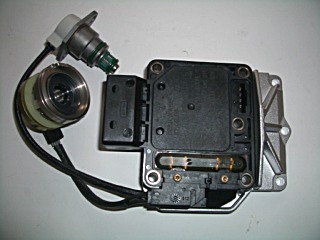 PSG5 module
PSG5 module
How to confirm if you have a programmable diesel pump? This is simple. Just erase all codes in the main ECU, then turn ignition off, disconnect the PSG5 plug from the pump module, then turn ignition on, re-read stored codes. Should a code relating to CAN-BUS be stored in the main ECU, you have a programmable pump. There seems to be allot of mixed information about in the trade on this subject. So don't assume anything, find out yourself, with the above method!
PSG16 (Twin plug pumps) This Bosch 44 terminal
version contains a read/write 16bit flash memory in the PSG16 module.
Where the engine management maps are stored. We do not encourage any user
testing on these models. Other issues are that the headers are pump
assigned which you cannot change or interchange between used pumps,
spooling solenoids are the same as the PSG5 units and can be interchanged.
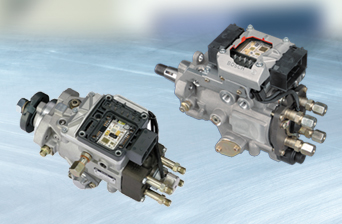
PSG5 pumps have one plug, PSG16 plugs have two!
Common rail injector testing (running leak off method). Connect correct internal diameter tubes to injector leak-off ports. Plug the leak off venturi on high pressure pump to prevent airlocks in the low pressure circuit and spillages. Start-run the engine for a few seconds, all bottles should have the same amount of diesel in them after the test run at idling speed. Any bottle with more fuel in it than the others. Will indicate a fault with the injector connected to the bottle in question. It is possible for the injector to have a fault and have less in the bottle, but normally a faulty injector will leak off more fuel due to, worn internal injector components. If a bottle has a lower volume in it, the chances are the coil in the injector is not being activated due to a dysfunctional internal injector coil or bad host wiring to it, or no signal being sent to it from the ECU. Most adapters can be bought for low cost. An eceptable leak back is about 20ml for 2 minutes idling.
Common rail injector solenoid testing in situ. The fuel injection process starts with a voltage being applied to the solenoid valve with a pull-in current of about 12 amps. During the injection state of the process, the current applied to the solenoid valve is reduced to half of the pull-in current i.e. 6 amps. This value is sufficient to maintain the injection control valve in the open position. You will need a sensitive DC inductive clamp attachment with a shielded cable, attached to an oscilloscope set to display a time scale to view solenoid control valve waveform which has a switching time of approximately 0.3 milliseconds. I find it quicker to test this type of injector in situ, than removing them. With a set of four injectors, if you get 10 amps pull-in on three & 5 amps running, but the fourth injector does not match these values. You've found the fault. How much current is not the issue, its if the values matching across the set of injectors, which counts. With the exception of very low current readings on a complete set of injectors. Which would point to a bad electrical supply. Or very low fuel pressure in the rail. Simple theory is, to overcome 1000bar plus of pressure with an electrical solenoid valve, a reasonable amount of current will be needed.
Note. Most injectors are coded for position. If not, all injectors are calibrated to take into account manufacturing tolerances. IMA or QR code for injector flow adjustment. These calibrations are indicated on the exterior of the injector by a code. The code is used by the EDC-ECU to adjust the duration of the injection cycle. If the codes for the individual injector's are incorrectly matched to the codes stored in the ECU, the engine may exhibit rough idle, increased combustion noise and black smoke emissions. These facts excludes the fitting of secondhand injectors. As a matter of information, we do not recommend ultrasonic cleaning for any injector with an electrical connection. Some companies do enact ultrasonic cleaning. I do not...! I believe it affects the long term reliability of the electrical components. We have needed to use an injector seat cutter for refitting common rail injectors. Only exception, when may need one is for a Mercedes Vito, if the injector seats have been leaking. But normally the cylinder head is past restoration and will need an expensive replacement.
Common rail injector static test leak off test (if engine cannot be started). Connect correct internal diameter tubes to injector leak-off ports. Plug the leak off venturi on high pressure pump to prevent airlocks in the low pressure circuit and spillages. Disconnect the inlet pump pressure metering valve connector and/or injector electrical connectors, some engine set-ups require injectors to be connected others need them to be disconnected. Crank the engine for ten seconds. Any injector with excessive back flow should be replaced (check the specs for your make). The basic theory here is, if you remove the electric connector to the pump pressure metering valve the pressure will ramp up to maximum (not for the faint hearted). Only complication here is, a very few pumps have a volume valve as well as a metering valve. Some setups have the pressure metering valve on the rail not the pump.
Common rail pressure sensor voltages. Typical values (Bosch EDC16) Rail pressure sensor.
| Engine stationary | 0.5 volts DC |
| Engine idling | 1.32 volts DC |
| Snap acceleration | 3.77 volts + DC |
Common rail high pressure pump testing in situ. Dynamic pressure tests are not encouraged by manufacturers, easy to say when you have all the kit and a stores dept packed with spare injectors & pumps to fit and try. With the inlet metering valve disconnected it allows full fuel pressure of up to 1600-1800 bar to be delivered. However at idle speed with everything connected the fuel pressure is only about 300-400 bar, which will give a fair indication of what is going on. High pressure dynamic testing should be the last resort, i.e. only if the engine can't be started. Most vehicles will need a cranking pressure of above 200-300 bar to start. Your only hope for measuring this value is serial data, using diagnostic equipment from the rail pressure sensor. Physical gauges are available which measure up 2000bar, but I can't see the benefit over serial data.
Injector Leak Off Testing.
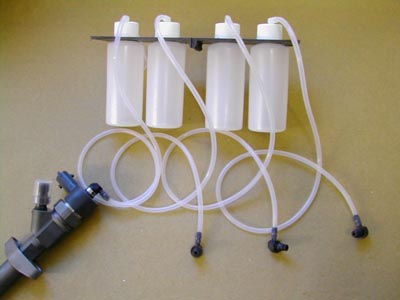 This set retails at over
£45
This set retails at over
£45
Mercedes 270 CDi leak off testing. No 5 injector
failed (near orange pipe clamp)
If your diagnosis is not conclusive. We can electronically bench test for pressure-volume by phasing & repair most common rail injectors, via return of post. common rail injector testing info
Water, poor quality diesel and fuel restrictions wreck diesel injection pumps. Use good clean fuel and change your filter!
EDC 15 M wiring diagram Vauxhall Astra Vectra 2.0DTi
info on EDC pump numbers-applications

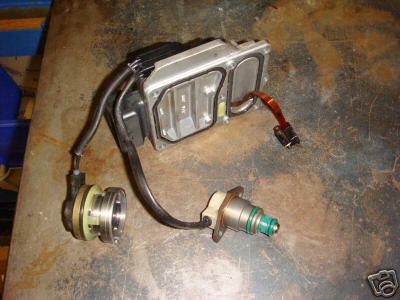
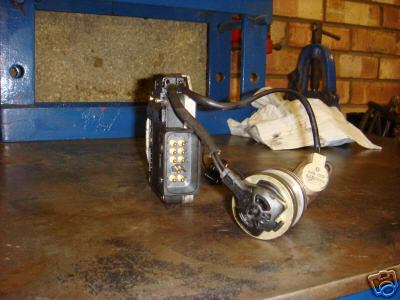
VP44 Electronics
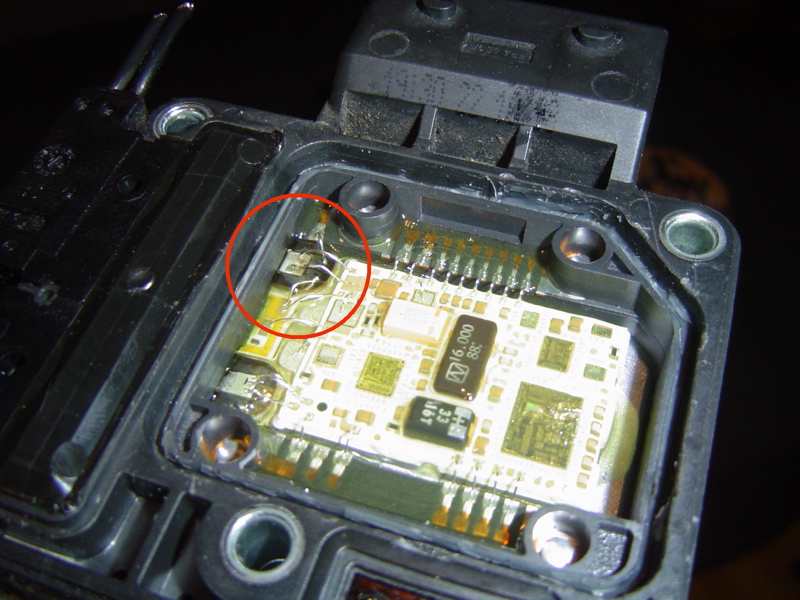
Bad news!
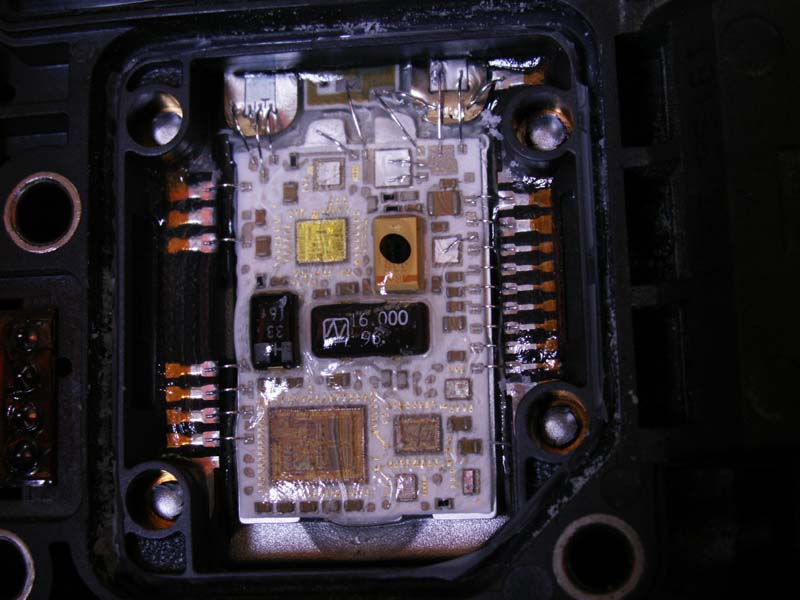
More bad news!
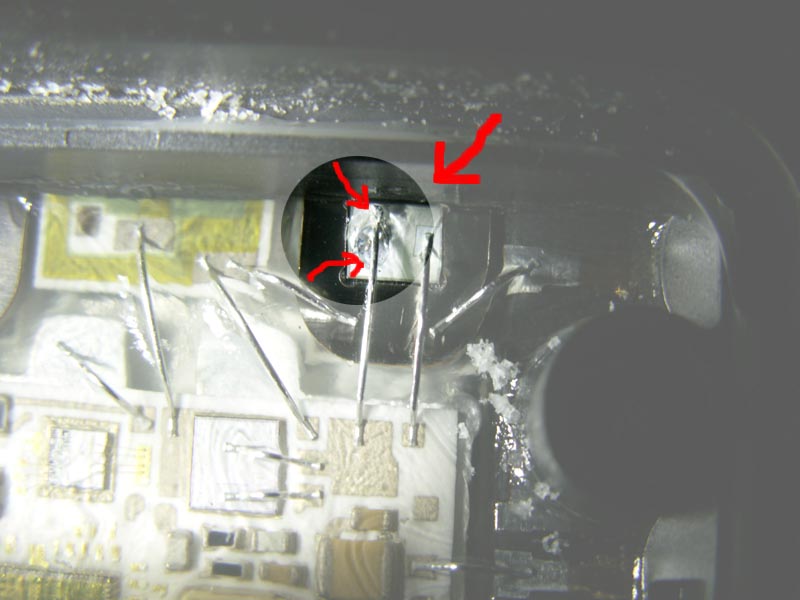
Repair!
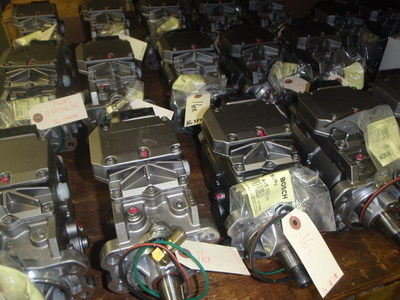
VP44
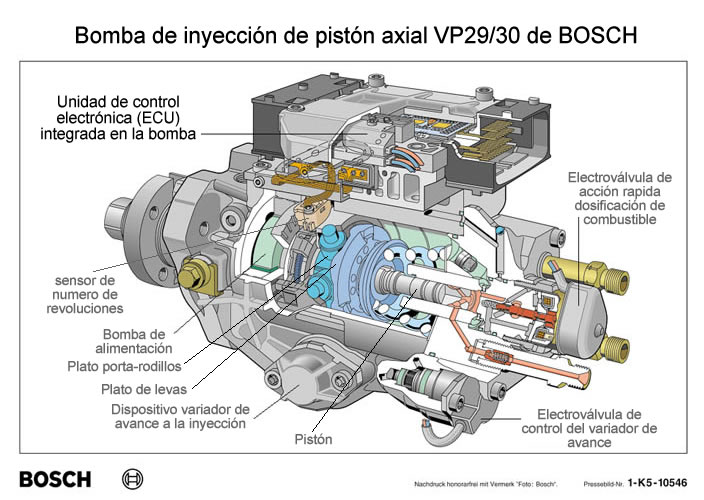
Testing-Bosch VE EDC diesel pump actuator. The actuator below is a common failure internally within the Bosch VE EDC diesel pump range.
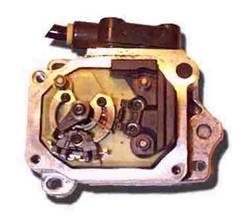
Below is a comprehensive table for fault diagnosis-testing the VE actuator.
|
Designation |
Unit |
Set Value |
Min |
Max |
|
POSITIONER TESTING |
|
|
|
|
|
Test temperature |
deg. C |
22.5 |
15.0 |
30.0 |
|
Impedance, connections 4 & 7 |
ohms |
0.7 |
0.4 |
1.0 |
|
Test temperature |
deg. C |
60.0 |
50.0 |
70.0 |
|
Impedance, connections 4 & 7 |
ohms |
0.775 |
0.450 |
1.100 |
|
Impedance, connection 4 & ground |
M ohms |
1.0 |
|
|
|
Impedance, connections 2 & 7 |
M ohms |
1.0 |
|
|
|
Impedance, connections 4 & 6 |
M ohms |
1.0 |
|
|
|
Impedance, connection 7 & ground |
M ohms |
1.0 |
|
|
|
HALF DIFFERENTIAL INDUCTIVE PICKUP |
|
|
|
|
|
Impedance, connections 1 & 3 |
K ohms |
5.7 |
4.9 |
6.5 |
|
Impedance, connections 2 & 3 |
K ohms |
5.7 |
4.9 |
6.5 |
|
Impedance, connections 1 & 2 |
K ohms |
11.4 |
9.8 |
13.0 |
|
Impedance, connection 1 & ground |
M ohms |
1.0 |
|
|
|
Impedance, connection 2 & ground |
M ohms |
1.0 |
|
|
|
Impedance, connection 3 & ground |
M ohms |
1.0 |
|
|
|
FUEL TEMPERATURE SENSOR |
|
|
|
|
|
Test temperature |
deg. C |
22.5 |
15.0 |
30.0 |
|
Impedance, connections 5 & 6 |
K ohms |
2.6 |
1.2 |
4.0 |
|
Test temperature |
deg. C |
60.0 |
50.0 |
70.0 |
|
Impedance, connections 5 & 6 |
K ohms |
0.75 |
0.30 |
1.20 |
|
Impedance, connection 5 & ground |
M ohms |
1.0 |
|
|
|
Impedance, connection 6 & ground |
M ohms |
1.0 |
|
|
|
SOLENOID VALVE START OF DELIVERY |
|
|
|
|
|
Test temperature |
deg. C |
22.5 |
15.0 |
30.0 |
|
Impedance, connections 1 & 2 |
ohms |
15.8 |
14.3 |
17.3 |
|
Test temperature |
deg. C |
60.0 |
50.0 |
70.0 |
|
Resistance connections 1 & 2 |
ohms |
18.25 |
15.50 |
21.00 |
|
EXCESS-FUEL STOP/SHUTOFF STOP |
|
|
|
|
|
Excess-fuel stop |
M volts |
4385 |
4120 |
4650 |
|
Shutoff stop |
M volts |
750 |
650 |
850 |
info on Red Diesel-Vegetable Oils
For those wishing to enact a cheap low cost repair to any type of diesel pump themselves (destroyed a threaded connector, pump ancillary or any other part) we have mountains (literately, tons by weight) of second-hand spares for sale for all types of pumps, new or old. From Lucas-CAV, Leyland and Perkins pumps to the latest EDC type. Formally my father traded as Diesel Electric for thirty years and I have inherited, pump spares new and old from as early as the 1960's.
Page updated 28-05-18
